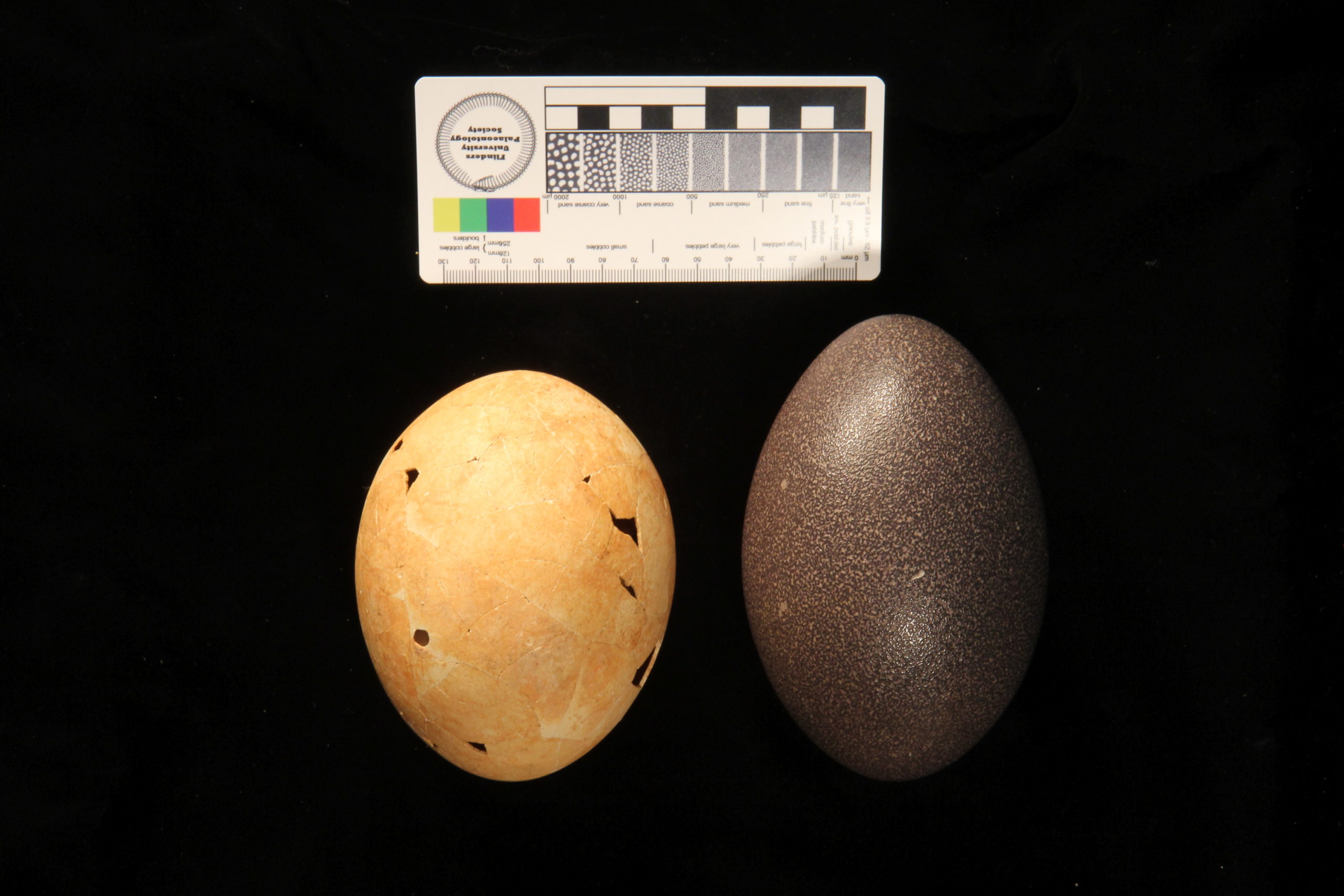Bird Palaeontology & Evolution
Research into avian palaeontology and evolution at Flinders covers a wide spectrum of issues, from the origin of birds to the assembly of the modern Australasian avifaunas and how they responded to climate oscillations during the Quaternary.
Our research aims to expand knowledge on the fossil record of birds, especially in but not limited to Australasia, to reveal past avian diversity and the evolution of modern clades. Two time periods are of key interest:
- Oligo-Miocene avifaunas of Australia, with a focus on lacustrine and fluvial deposits of central Australia, and
- Quaternary avifaunas, through investigations into fluvial, lacustrine and cave deposits.
Key researchers
Associate Professor Trevor Worthy specialises in the identification and taxonomy of fossil birds. He has worked on a wide range of birds including palaeognath ratites, waterfowl, cormorants, parrots and rails.
Dr Jacqueline Nguyen is a DECRA Fellow specialising in the osteology and palaeontology of fossil songbirds or passerines. This group accounts for the majority of birds yet is generally poorly studied in most fossil avifaunas. She is currently assessing the diversity of Oligo-Miocene songbirds from Riversleigh and central Australia, and the composition of Quaternary songbird avifaunas from various localities.
Recent & ongoing research areas
Origins and biology of giant Australasian fowl: The Australasian region includes many of the basal lineages of modern waterfowl (Magpie-goose, Cape Barren Goose, Pink-eared Duck) and landfowl (megapodes) but until recently also had endemic radiations of giant birds in this group. Research projects have studied the osteology and relationships of the endemic New Caledonian Sylviornis, giant extinct Australia megapodes (part PhD project, Elen Shute), and the Australian dromornithid mihirung birds (part PhD project, Warren Handley). Current projects are especially focused on the extinction and biology of the last-surviving mihirung Genyornis newtoni (including PhD project Phoebe McInerney).
Taxonomic descriptions of new Australasian taxa: The fossil avifauna of Australasia is relatively poorly known, especially for the pre-Quaternary period (>2.5 million years ago). Therefore palaeontological investigations of such deposits routinely reveal previously unknown species. Description of such taxa are at the core of understanding the assembly of the modern avifaunas, and is central to much of the research we do (see Publications and PhD projects by Elen Shute, Ellen Mather and Jacob Blokland).
Pacific avifaunas: Trevor Worthy has long worked with collaborators, especially archaeologists including David Burley, Pat Kirch, Atholl Anderson, Matthew Spriggs, Stuart Bedford, and Stuart Hawkins on identifying and describing the fossil avifaunas from many and widespread Pacific islands, including New Caledonia, Vanuatu, Fiji, Tonga, and Mangareva in French Polynesia. Archaeological investigations often provide the only insight into the prehuman avifaunas of the islands in this region.
The St Bathans early Miocene avifauna: A long-standing research program has been revealing the diversity and relationships of the avifauna and other vertebrates from the early Miocene St Bathans Fauna, New Zealand, with key collaborators in University of NSW, University of Queensland, Canterbury Museum NZ, and Museum of New Zealand. This locality is significant as providing the only fossil evidence of the pre-Quaternary terrestrial biota of that country. Over 40 bird species are known, yet many remain to be formally described.
Quaternary avifaunas of Australasia: Projects are ongoing on fossil bird assemblages from the Thylacoleo Caves, Nullarbor Plain, caves near Naracoorte, South Australia, and Wellington Caves, New South Wales, to assess recent changes in diversity and composition of the avifauna (Jacqueline Nguyen, Elen Shute).
Completed PhD projects
- Elen Shute, Flinders University, Early and Middle Pleistocene non-passerine bird fossils from the Thylacoleo Caves, Nullarbor Plain (Awarded 2019)
- Warren Handley, Flinders University, Endocranial anatomy of Australasian flightless galloanseres, with a focus on evolutionary transformation and the phylogenetic utility of the avian brain (Awarded 2020)
- Ellen Mather, Taxonomy and systematics of Oligo-Miocene and Quaternary accipitrids (Accipitridae) from Australia (Awarded 2022)
Ongoing PhD projects
- Jacob Blokland, Taxonomy and systematics of Oligo-Miocene rails (Rallidae) of Australia and New Zealand
- Phoebe McInerney, Biology and relationships of Genyornis newtoni
- Tim Niederer, Australian fossil flamingos
